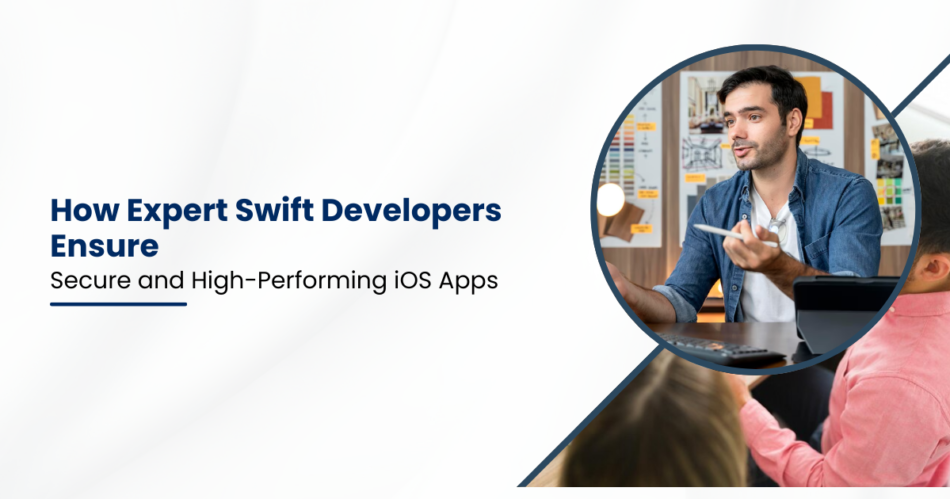The iOS app development landscape is evolving rapidly, with performance and security being paramount concerns. According to a report by Zimperium, misconfigured cloud settings in thousands of iOS apps have exposed users’ personal data, passwords, and even medical information. This highlights the critical need for developers to prioritize security in their applications. Additionally, performance issues can lead to user dissatisfaction and increased churn rates. A study by Localytics found that 23% of users abandon an app after one use, and 58% of users will abandon an app if it crashes twice. These statistics underscore the importance of both security and performance in iOS app development.
The Role of Expert Swift Developers
Expert Swift developers play a crucial role in building secure and high-performing iOS applications. Their deep understanding of the Swift programming language and iOS frameworks enables them to implement best practices that enhance both security and performance.
Ensuring App Security
1. Secure Data Storage
Sensitive user data should never be stored in plain text or insecure locations within the app’s sandbox. Expert developers utilize Apple’s Keychain Services to securely store sensitive information such as passwords and authentication tokens. For additional protection, they may employ encryption techniques like AES-256 to encrypt data before storing it locally.
2. Secure Network Communication
All network communications within the app should be encrypted using Transport Layer Security (TLS) to protect against eavesdropping and man-in-the-middle attacks. Developers implement secure communication protocols and server certificates to establish trusted connections. Additionally, they use certificate pinning to prevent attackers from impersonating trusted servers.
3. Code Obfuscation and Reverse Engineering Protection
To prevent reverse engineering and unauthorized access to the app’s code, developers employ code obfuscation techniques. While iOS doesn’t provide built-in code obfuscation tools, third-party tools like SwiftShield or Obfuscator-LLVM can be used to make the code harder to understand and decompile. This adds an additional layer of security against potential attackers.
4. Regular Security Audits and Penetration Testing
Conducting regular security audits and penetration testing helps identify and address potential security vulnerabilities in the app. Tools like Snyk Code SAST can analyze the source code to detect vulnerabilities such as SQL injections and cross-site scripting (XSS). By integrating these tools into the development workflow, developers can proactively address security issues before they become critical.
Optimizing App Performance
1. Efficient Memory Management
Effective memory management is essential for maintaining high performance in iOS apps. Swift’s Automatic Reference Counting (ARC) helps manage memory by automatically tracking and deallocating objects when they are no longer needed. Developers ensure that objects are properly released to prevent memory leaks, which can degrade app performance.
2. Asynchronous Programming
Asynchronous programming allows tasks to be executed in the background without blocking the main thread, ensuring a smooth user experience. Developers utilize Grand Central Dispatch (GCD) and Swift Concurrency (async/await) to handle multiple operations simultaneously. This approach prevents UI freezes and enhances app responsiveness.
3. Profiling and Performance Monitoring
Regularly profiling the app’s performance helps identify bottlenecks and areas for improvement. Tools like Xcode Instruments allow developers to monitor CPU usage, memory allocation, and energy consumption. By analyzing this data, developers can optimize code and resources to improve app performance.
4. Optimizing Data Structures
Choosing the right data structures can significantly impact performance. For example, using a Set instead of an Array for checking the existence of elements can be much faster. Developers analyze the app’s requirements and select appropriate data structures to enhance performance.
5. Lazy Initialization
Lazy initialization helps reduce memory usage and improve performance by creating objects only when they are needed. Developers implement lazy initialization for heavy objects or resources that are not immediately required, ensuring efficient use of memory.
Best Practices for Secure and High-Performing iOS Apps
- Follow Secure Coding Guidelines: Adhere to Apple’s secure coding guidelines to ensure that the app is built with security in mind.
- Regularly Update Dependencies: Keep third-party libraries and frameworks up to date to mitigate vulnerabilities associated with outdated components.
- Implement Input Validation: Validate and sanitize user input to prevent injection attacks and other forms of malicious input manipulation.
- Conduct Regular Code Reviews: Perform regular code reviews to identify potential security and performance issues early in the development process.
- Optimize for Energy Efficiency: Design the app to minimize energy consumption, which can improve device performance and battery life.
Conclusion
Expert Swift developers are instrumental in building secure and high-performing iOS applications. By implementing best practices in security and performance optimization, they ensure that apps provide a seamless user experience while safeguarding user data. As the demand for mobile applications continues to grow, the role of skilled Swift developers becomes increasingly vital in delivering quality iOS apps.









